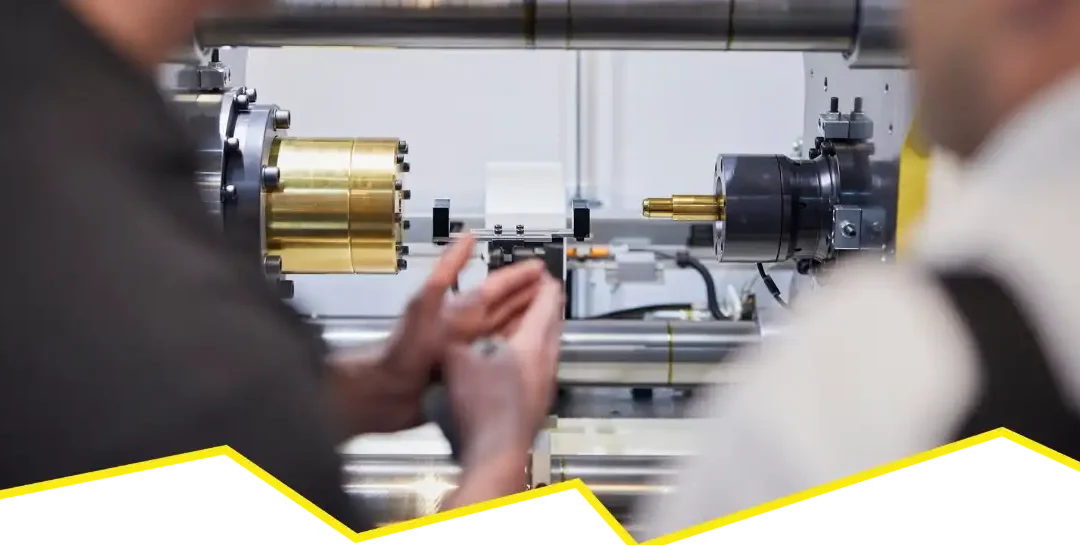What is cold forming and what advantages does it offer?
Als Kaltumformung refers to the processing of metallic materials at a working temperature below the recrystallization temperature. It is one of the core competencies from Felss. Reason enough to take a closer look at them today. How does cold forming actually work?

Nicolas Heck
Physical principles of cold forming
When a melt cools, crystals form – starting from so-called crystallization nuclei.
crystals
from. The crystals grow in different sizes as they cool, depending on the cooling rate, and thus form the microstructure of the material. This crystal formation is decisive for the properties of the metal, as the size and arrangement of the crystals influence the mechanical properties such as hardness, toughness and strength.
In the cold forming process, this microstructure is in turn
the effect of strong tensile and compressive forces
changed but not destroyed by deforming the crystals themselves. In simple terms, this causes shifts in the lattice structure of the material at a molecular level. The result is increased tension within the material.
These stresses are quite desirable, as they lead to work hardening of the material and consequently to an
increase in strength
of the workpiece. This allows workpieces to be produced that can be significantly thinner-walled than their cast or forged counterparts while retaining the same load-bearing capacity. This is particularly relevant in lightweight construction.
Advantages of cold forming
As a rule, cold forming takes place at
room temperature
takes place. It enables compliance with
tightest dimensional tolerances
with simultaneously
short processing times
. In contrast to machining processes, no material is removed, which means that
no waste
and the natural fiber direction of the material is not cut.
Cold forming vs. hot forming
In contrast to hot forming, workpieces produced by work hardening do not require final hardening,
no final hardening
required. Of course, there is also no scaling on the Surface of the workpiece. However, higher forming forces are required than with hot forming. It can also lead to a change in the
magnetic properties
of the workpiece and its electrical conductivity.
However, the most important advantage of cold forming is the aforementioned stress-induced
increase in the strength of the
of the workpiece while at the same time reducing the ductility of the material.
Industrial use of cold forming
The cold forming of metal is used, among other things, in the production of
copper wires
widely used to give this relatively soft metal greater strength. At Felss, on the other hand, cold forming is used to Components for the automotive, aviation and precision engineering industries, which are particularly light and at the same time highly resilient. These processes utilize the advantages of cold forming, such as increased strength through work hardening and the ability to achieve tight dimensional tolerances and good surface properties.
For this we use
various methods
, such as rotary swaging, axial forming, Ultra-Precision Rolling Mills and more to give the workpiece the desired shape. Here you can find out more about our
Technologies
.
How warm does the material get?
This naturally raises the question of up to what
temperature limit
cold forming is possible. A common rule of thumb says that with 40 % – 50 % of the melting temperature of a material whose recrystallization temperature has been reached. From this point onwards, we are dealing with hot forming. This is already the case with lead at room temperature, whereas this temperature limit is not yet reached with many steels even at over 200 °C.
The
recrystallization temperature
also depends on how strong the forces acting during forming are. It can also be increased thermomechanically by adding titanium or niobium as alloying elements to the materials in question.
Recrystallization annealing restores original properties
Sometimes, however, an increase in strength is also a hindrance. This is particularly the case if a workpiece is to be further processed after cold forming. In such cases, the
recrystallization annealing
(a heat treatment) to restore its original formability.
Especially for easy
further processing
cold-rolled or cold-drawn wires and sheets, it is of great importance. However, the process is also used as a
intermediate step
between two cold forming processes to facilitate machining.
The future of cold forming
The
cold forming
enables the production of particularly lightweight yet highly resilient components due to the increased strength of the material. This is particularly important in the context of e-mobility. Considerable weight savings can be achieved here, especially with hollow shafts.
Felss utilizes the advantages of cold forming, such as increased strength through work hardening and the ability to achieve tight dimensional tolerances and excellent surface properties, to develop
efficient and precise machines
and tools for the manufacture of such components. At Felss, we are both with our
machines
for cold forming as well as for the
component production
on behalf of customers in these developments.
Conclusion
Cold forming is an efficient method of metalworking that produces high-strength, thin-walled workpieces without material loss. This process enables the production of high-strength and thin-walled workpieces by changing the microstructure of the metal at a molecular level, which results in stress-induced work hardening.
Compared to hot forming, it does not require subsequent hardening and avoids scaling. This technology is widely used in industries such as automotive engineering and aviation, where precision and lightweight construction are crucial. At Felss, we use innovative cold forming techniques to develop efficient machines and tools for these industries.

Come to us as early as the development phase of your projects
We support you throughout the entire process – from the drawing to the finished component and beyond.
